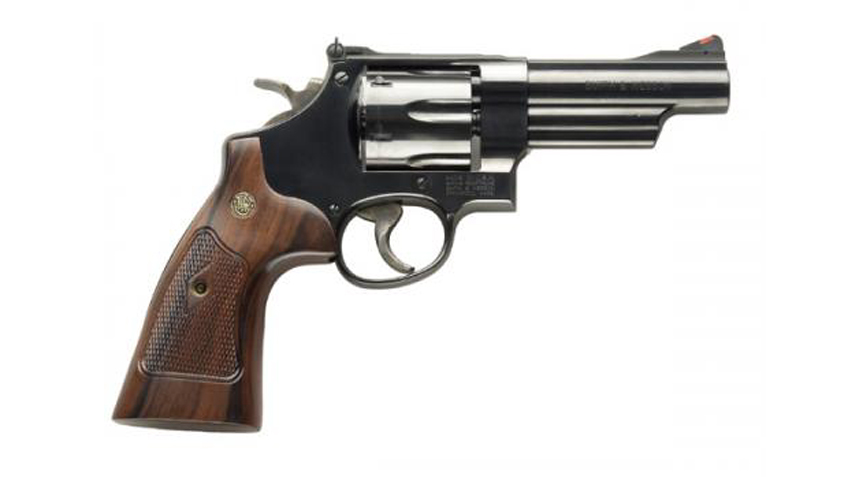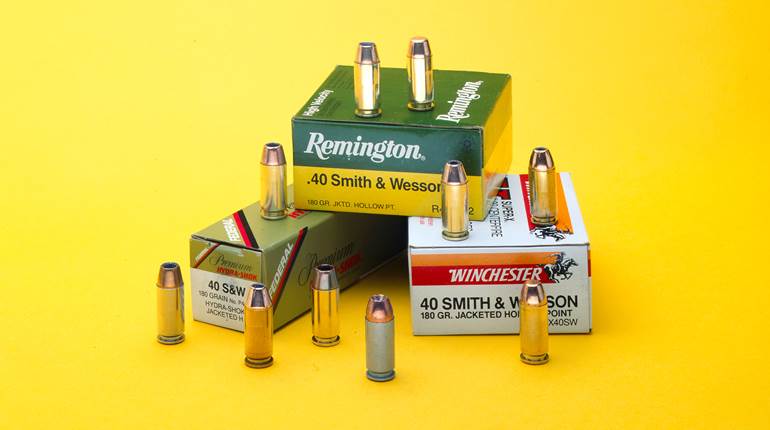
The decade of the 1980s was a time of great change in my personal circumstances. For the first five years, I was a working cop who spent almost all of his off-duty time fooling around with one kind of handgun or another. At the halfway point in the decade, I retired from law enforcement and went to work full-time for one of the several gun magazines headquartered in southern California. Throughout those 10 years, I also fueled my growing collection of pistols and revolvers by handloading for them. That first Rockchucker is still down at the right front corner of the loading bench and would still be my primary tool if the need should arise. Despite a lifetime of interest in guns and shooting, I came up hard against the fact that there was so much that I did not know. I set about researching the subject and began collecting gun books. That evolved from a few volumes from the top shelf of the book case to about half a wall. But it's absolutely certain that the mid-point of the decade—when I somehow lucked into the writing job—was a pivotal time in my work as a gunwriter.
As a writer, sample test equipment is usually available and reasonable quantities of test ammunition is customarily provided. Best of all, the various gun makers will loan you a sample firearm when they know you will be doing an article on the product. There are some obvious ethical pitfalls that go along with this system, but it has one salient virtue—your experience with a greater variety of guns expands at an incredible rate. This was exactly what happened in my case. One of the early assignments I was given in the first few months as a writer was a book on 9 mm handguns. I did a major section on shooting a variety of the guns. “Ninefiring” as I called it, involved shooting the same protocol with 50 different guns. I had rather modest prior experience with 9 mm pistols, but never was really wild about them. Before this assignment, I had fired a P38 and Luger, Smiths Models 39 and 59, plus the 9 mm cylinder in a Ruger Blackhawk. The experience gained in shooting the Lahti, Broomhandle, Mab PA15, Browning, CZ 75, Steyr and many others (including a Contender barrel) is valuable in that I can actually contend that I have shot just about everything in 9mm. I could say that in 1985, but they have made so many of the things since then that they have out-produced me. I struggle to catch up.
Thus, for the decade of the 80s, I was first an armed police officer and very advanced hobbyist, but ended up a professional and salaried writer. It could not have been a better time for this, as the handgunning world was going wild. The older and traditional approach to handgun selection was still strong. New shooters were often advised to respect the great traditions of impeccably-built DA/SA revolvers from Colt and Smith & Wesson. But Bill Ruger was making lower-priced guns that essentially did the same things. Value-conscious American shooters started looking away from tradition and toward practicality. Handgun competition shooting evolved from just bullseye to a host of different handgun disciplines. Both law enforcement and military service switched to new and different designs. The self-defense market was relatively small, but grew exponentially at the end of the decade when more and more states listened to their citizens and authorized concealed carry. Our domestic factories churned out a series of great handguns and the importers brought in many quality guns from Germany, Belgium, Austria, Czech Republic, Italy, Spain, China and probably a few other places I overlooked. In such a time, it was an absolute delight to be in the loop, where I was paid to look at a wide variety of handguns and write about their characteristics and performance. But today, I have the task of deciding which model handgun was my favorite over that 10-year period of time. It isn't easy.
But it can be done. After some reflection, I decided to look at the “what's your favorite?” question from the standpoint of how much time I spent with a gun and how much fun I had doing it. Not too much doubt about that. It is actually two guns, both of them Smith & Wesson N-frame revolvers in that cult-favorite .41 Magnum caliber. When Keith and Jordan lobbied this caliber into existence for police service in the 60s, they had a slightly smaller sixgun in mind. But S&W chose to use the tried 'n true N-frame as a foundation for the Model 57 and Model 58 .41 Magnum revolvers. I had several specimens of each and they were a source of much shooting satisfaction, particularly in the handloading sense. 
Let's begin with the M58. This was the fixed-sight version of the .41 adopted by a few departments around the country—most notably San Francisco and San Antonio. Using low-velocity loads by Remington, this was an enormously successful cartridge in actual shooting situations. San Antonio officers fought tooth and nail to keep theirs, but eventually lost out to lesser officers who complained of the gun's weight and recoil. I used to carry mine off-duty in a muzzle up Safariland underarm rig. There for a while, San Francisco's guns were all over the place when they surplused them off. I used several for custom projects, but kept Col. Rex Applegate's in mint condition. This was a brute of a revolver and nobody packing a M58 was ever poorly armed.
The Model 57 came out at the same time as a sporting counterpart to the M58. It came with target fixtures and a choice of barrel lengths. I got so fond of the 8 3/8-incher that I had three of them at one point. I feel they had a small edge over the very similar .44 Magnum for long range shooting in IHMSA matches. The first .41 Magnum ammunition was not always the best in accuracy, so I tried endless numbers of handloads and even had a custom bullet mold made. I was able to get around two inches at a full 100 yards with several handloads. The .41 is a great and forgiving cartridge to load. A couple of custom 5” M57s came along and rank high in my regard for an outside guy's working guns.
Smith & Wesson's elegant workhorse wheelgun is the fine Model 57/58 in .41 Magnum—my favorite handgun for the 1980s.
Images courtesy Smith & Wesson and iCollector.com.
Additional Reading:
By the Decade: Wiley Clapp's Favorite Handguns—The 1960s
By the Decade: Wiley Clapp's Favorite Handguns—The 1970






































